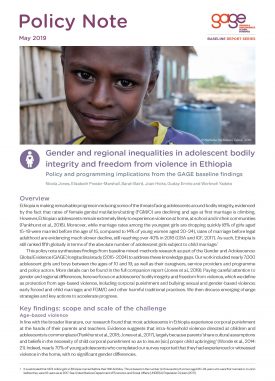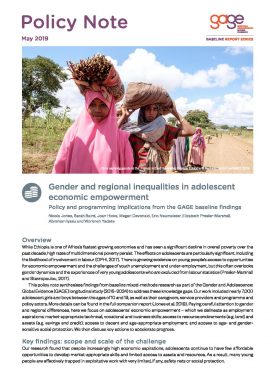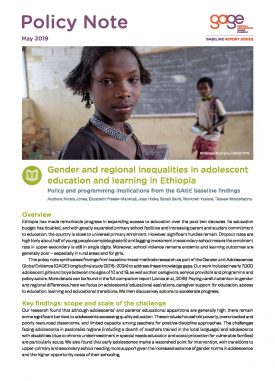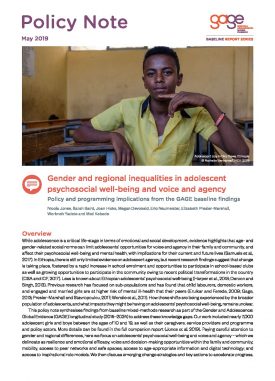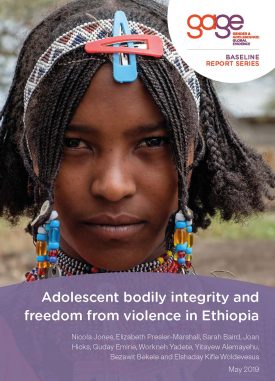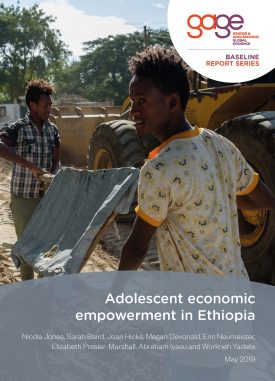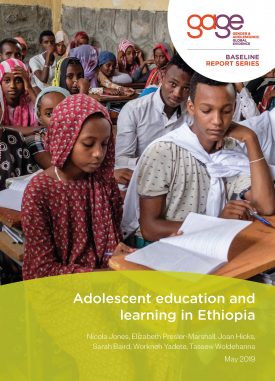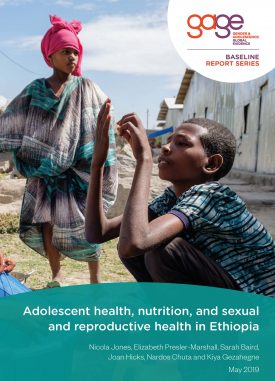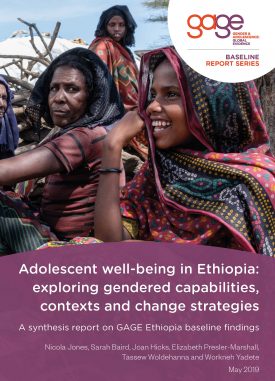The policy note synthesises findings from baseline mixed-methods research as part of the Gender and Adolescence: Global Evidence (GAGE) longitudinal study (2015–2024). Our work included nearly 7,000 adolescent girls and boys between the ages of 10 and 19, as well as their caregivers, service providers and programme and policy actors.
Paying careful attention to gender and regional differences, here we focus on adolescents’ health, nutrition and sexual and reproductive health, which we define as being physically healthy and well nourished; and having access to age- and context-appropriate puberty education and support, and to age- and context-appropriate sexual and reproductive health information, supplies and services. We then discuss key actions to accelerate progress.
Ethiopia’s current generation of adolescents are comparatively advantaged over previous generations. Food security is improving, childhood mortality and morbidity are declining, and adolescent fertility is dropping due to declines in child marriage and better access to contraception. However, our findings highlight significant scope for improvements in adolescent health and nutrition, including the need to address gender, regional and disability-related inequities in access to age-tailored information, services and support. There is also an urgent need to address adolescents’ exposure to HIV (which appears to be on the rise), climate change-related health and nutritional vulnerabilities, and growing risks of substance abuse, especially in urban areas.
Suggested citation
Jones, N., Presler-Marshall, E., Baird, S., Hicks, J., Yadete, W., Chuta, N. and Gezahegne, K. (2019) ‘Gender and regional inequalities in adolescent health and nutrition in Ethiopia.’ Policy Note. London: Gender and Adolescence: Global Evidence. (https://www.gage.odi.org/publication/gender-and-regional-inequalities-in-adolescent-health-and-nutrition-in-ethiopia/)
